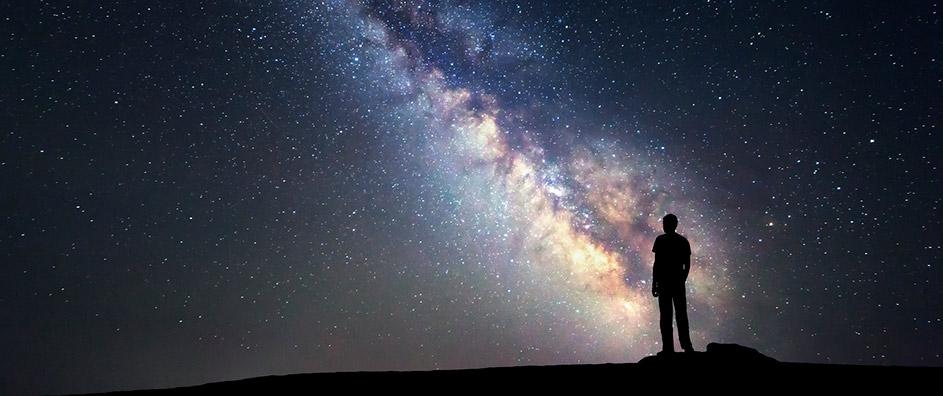In a world buzzing with questions of existence, one of the most profound inquiries that has captivated philosophers, scientists, and theologians alike is, “Does the universe have a designer?” This query does not merely dwell in the realm of the abstract; it beckons our most fundamental understanding of creation, purpose, and the very nature of existence itself. From a Bahá’í perspective, this question is reframed not simply as an intellectual pursuit, but as an exploration of the divine interplay between the Creator and creation.
The Bahá’í Faith presents a multifaceted understanding of the universe’s origins. At its core lies the assertion that there is indeed a designer—a transcendent intelligence that underpins the very fabric of all that exists. This divine essence is conceptualized as God, the ultimate source of all creation, whose attributes permeate the universe. Through this lens, one can view the cosmos not as a mere assembly of random occurrences but as a carefully constructed tapestry, woven with purpose and intention.
However, one might pose a playful challenge to this assertion: if the universe is design, then what is the relationship between chaos and order? The dynamic interplay between these seemingly polar opposites forms a crucial aspect of the conversation surrounding divine design. In Bahá’í theology, chaos is not viewed as a negation of order but rather as an essential element of the universe’s existence. It is within this chaos that creation finds its expressions, evolving through cycles of complexity and simplicity. Hence, the universe embodies both design and chaos, leading us to consider the possibility that the divine designer embraces and transcends both aspects.
From the perspective of Bahá’í reverence for science, one is encouraged to examine the universe through both spiritual and empirical lenses. The faith promotes the harmonious relationship between religion and science, positing that both realms are manifestations of truth. This dual approach nurtures a profound appreciation for the intricacies of the universe. As one delves deeper into this exploration, one might ponder: if the universe’s design is apparent through the laws of physics and the beauty of nature, how does this align with the concept of free will and human agency?
Indeed, free will is an integral component of the Bahá’í worldview. While the universe operates under specific laws established by the Creator, individuals are granted the capacity to exercise their will within this framework. The designer’s intention comes to fruition not through predestination but rather through the collaborative efforts of humanity in pursuit of unity and advancement. This dynamic interplay raises an intriguing question: does our ability to shape our reality further affirm the existence of a designer, or does it introduce a dissonance to the narrative of divine orchestration?
To navigate these philosophical waters, it is vital to comprehend that Bahá’í teachings emphasize the significance of human agency as a gift. Individuals are empowered to engage with the universe, contributing to its evolution. The idea of a designer does not entail a distant Creator who micromanages every aspect of the cosmos; instead, it suggests a divine architect who has instilled within creation a vast potential for growth and self-realization. This perspective nurtures a sense of responsibility, urging individuals to recognize their role within the grand design.
Furthermore, Bahá’í teachings invite contemplation on the nature of time and space as frameworks established by the designer. These dimensions reveal patterns that are both predictable and intricate, hinting at an overarching plan. Yet, one might ask: if time and space are constructs of a divine design, how do they interact with the human experience of eternity? Bahá’í writings elucidate the duality of the physical and spiritual realities, asserting that while our temporal experiences may be fleeting, they are imbued with eternal significance through the soul’s journey. This intertwining of temporal and eternal prompts an exploration of how the design of the universe serves a purpose that transcends mere existence.
The Bahá’í perspective on the universe’s design also emphasizes the interconnectedness of all existence. All beings, in their diversity, are seen as expressions of the same divine source. This profound unity stands as a testament to the designer’s intention. As one navigates this interconnectedness, a contemplative question arises: Does the existence of suffering and discord within the human experience challenge the notion of a benevolent designer? The Bahá’í response highlights that suffering may be an intrinsic part of growth, enabling the soul to strive toward an understanding of compassion and empathy. In this light, the universe’s design may indeed include the allowance for adversity as a means of facilitating spiritual advancement.
Ultimately, the exploration of whether the universe has a designer beckons individuals to engage in a holistic dialogue between the known and the unknown. The Bahá’í Faith encourages a quest for understanding that marries reason with revelation, science with spirituality. It invites all inquirers to ponder the depths of meaning that lie beyond the surface of existence. The question itself, rather than yielding a definitive answer, inspires a journey—a quest toward greater understanding and unity among diverse beliefs. In the grand pursuit of insight, it becomes evident that the exploration of design encompasses the very essence of what it means to be human; to discover, to question, and to embrace the complexity of our shared existence.
